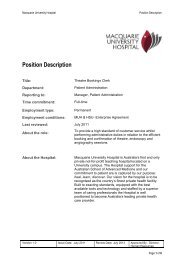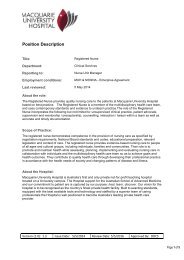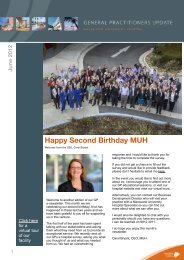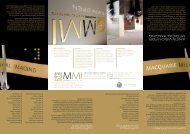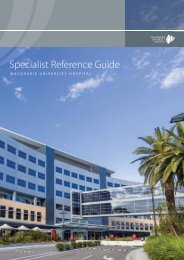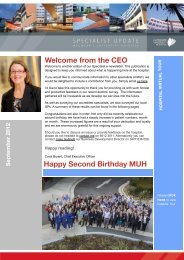Plenary Oral Presentations - Macquarie University Hospital
Plenary Oral Presentations - Macquarie University Hospital
Plenary Oral Presentations - Macquarie University Hospital
You also want an ePaper? Increase the reach of your titles
YUMPU automatically turns print PDFs into web optimized ePapers that Google loves.
16 th International Meeting of the Leksell Gamma Knife ® SocietyMarch 2012, Sydney, AustraliaVA-107Radiosurgery for unruptured cerebral AVMs: focused onlong-term seizure outcome2Dong Gyu Kim, 1 Seung-Yeob Yang, 2 Hyun-Tai Chung1Department of Neurosurgery, Dongguk <strong>University</strong> Graduate School, Seoul, Korea2Department of Neurosurgery, Seoul National <strong>University</strong> College of Medicien, KoreaObjective: To date, seizures in relation to arteriovenous malformations (AVM) have been a secondarytarget of most studies. The insufficient evaluation, in conjunction with the lack of consistent seizureoutcome assessment, has made it been difficult to draw conclusions about seizure outcome afterradiosurgery for AVM. This study aimed to determine the effect of radiosurgery on seizure outcomedepending on AVM obliteration and on the development of new seizure in patients with AVM.Methods: Between 1997 and 2006, 161 consecutive patients underwent radiosurgery for unrupturedAVM and were retrospectively assessed with a mean follow up of 89.8 months by their medicalrecords, updated clinical information and, when necessary, direct patient contact. Seizure outcomewas assessed using the Engel seizure frequency scoring system.Results: Of the 86 patients with a history of seizure before radiosurgery, 76.7% (66/86) were seizurefreeand 58.1% (50/86) were medication-free at the last follow-up visit. Of the patients who achievedAVM obliteration, 96.7% (58/60) were seizure-free while 30.8% (8/26) of those patients who did notachieve AVM obliteration were seizure-free (P=0.001). The proportion of patients who were medication-freewas 81.7% (49/60) of the patients with obliteration and 3.8% (1/26) of patients withoutobliteration (P



